Pipidae
Tongueless Frogs, Aglossa
David Cannatella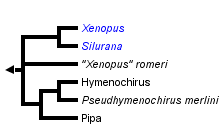


This tree diagram shows the relationships between several groups of organisms.
The root of the current tree connects the organisms featured in this tree to their containing group and the rest of the Tree of Life. The basal branching point in the tree represents the ancestor of the other groups in the tree. This ancestor diversified over time into several descendent subgroups, which are represented as internal nodes and terminal taxa to the right.

You can click on the root to travel down the Tree of Life all the way to the root of all Life, and you can click on the names of descendent subgroups to travel up the Tree of Life all the way to individual species.
For more information on ToL tree formatting, please see Interpreting the Tree or Classification. To learn more about phylogenetic trees, please visit our Phylogenetic Biology pages.
close boxIntroduction
Pipids are highly aquatic frogs that rarely if ever venture out of water. They have several adaptations to aquatic life, including the loss of the tongue (tongues are not generally useful for feeding in water), and the presence of lateral line organs, which are used to detect wave motion in water (these are present in most groups of fishes). The group is sometimes called the Aglossa.
Pipid frogs are found in Africa, South America, and just get into Panama. Some species in South America, such as the Surinam Toad (Pipa pipa) are extremely flattened and look like roadkills. Females of the genus Pipa have an elaborate mating behavior, in which eggs are deposited on the back of the female, and the skin swells up around the eggs to encase them in pockets in which the embryos develop. In some species the eggs hatch out as tadpoles, but in others fully formed froglets emerge from the mother's back.
Tadpoles (when present) lack beaks and denticles, and have paired spiracles (if spiracles are present). This is the Orton type 1 tadpole, also found in Rhinophrynidae. There is much diversity in larval morphology and ecology in pipids. Tadpoles of Xenopus and Silurana are extremely efficient filter feeders. Tadpoles of Hymenochirus are carnivorous, eating larger prey items. In some species of Pipa the eggs (embedded in the mother's back) hatch out as tadpoles, but other species have direct development, in which froglets emerge.
The genus Xenopus (African Clawed frogs) has undergone drastic evolution in chromosome number, producing tetraploid (4n), and octoploid (8n), and even dodecaploid (12n) species. These higher levels of ploidy may have resulted from hybridization of between species. One species, Xenopus laevis, is widely used as a lab animal in molecular and developmental biology. The Dwarf Clawed Frogs (Hymenochirus) are very small, about 20-30 mm, and are widely sold in aquarium stores. The call of many pipid frogs is a clicking sound, which in Xenopus borealis is produced by forcefully pulling apart the large arytenoid cartilages of the larynx (voice-box), thus producing a "pop" by implosion.
Discussion of Phylogenetic Relationships
The definition of the name Pipidae is problematic because of the relationships of Mesozoic and Tertiary taxa to living pipids (Báez, 1981). Báez' cladogram placed †Thoraciliacus, †Cordicephalus, †Saltenia, and †Eoxenopoides outside of the living Pipidae. She used two synapomorphies for Pipidae (including the aforementioned taxa): the absence of a quadratojugal and the absence of mentomeckelian bones. The first of these is also present in the closely related †Palaeobatrachidae, and may be diagnostic of a larger clade. Although mentomeckelians are reported in palaeobatrachids, the examination of †Palaeobatrachus fossils and figures in Spinar (1972) has not convinced Cannatella of their presence.
Cannatella and Trueb (1988a) diagnosed the living Pipidae by a large number of synapomorphies including presence of an epipubis cartilage, an unpaired epipubic muscle, absence of a quadratojugal, free ribs in the larvae, a fused articulation between the coccyx and sacrum, a short, stocky scapula, elongate septomaxillary bones, ossified pubis, a single, median palatal opening of the eustachian tube, lateral line organs in the adults, and absence of a tongue. Several of these characters are present in fossil taxa, and thus may be diagnostic of larger clades. Several others cannot be assessed in fossils. By ignoring the fossils, Cannatella and Trueb (1988a) produced a diagnosis for the family that was misleading. Relationships within the living Pipidae were discussed by Báez (1981), Cannatella and de Sá (1993), Cannatella and Trueb (1988a,b), and de Sá and Hillis (1990).
To ensure stability, Ford and Cannatella (1993) defined the node-based name Pipidae to be the most recent common ancestor of living pipids (Xenopus, Silurana, Hymenochirus, Pseudhymenochirus, and Pipa) and all of its descendants. Taxa considered to be fossil "pipids" (†Thoraciliacus, †Cordicephalus, †Saltenia, †Shomronella, and †Eoxenopoides) are assigned only to the level of Pipimorpha.
References
Báez, A. M. 1981. Redescription and relationships of Saltenia ibanezi, a Late Cretaceous pipid frog from northwestern Argentina. Ameghiniana 18(3-4):127-154.
Cannatella, D. C., and R. O. de Sa. 1993. Xenopus laevis as a model organism. Syst. Biol. 42(4):476-507.
Cannatella, D. C., and L. Trueb. 1988a. Evolution of pipoid frogs: Intergeneric relationships of the aquatic frog family Pipidae (Anura). Zool. J. Linn. Soc. 94:1-38.
Cannatella, D. C., and L. Trueb. 1988b. Evolution of pipoid frogs: morphology and phylogenetic relationships of Pseudhymenochirus. J. Herpetol. 22:439-456.
de Sá, R. O., and D. M. Hillis. 1990. Phylogenetic relationships of the pipid frogs Xenopus and Silurana: an integration of ribosomal DNA and morphology. Mol. Biol. Evol. 7(4):365-376.
Ford, L. S., and D. C. Cannatella. 1993. The major clades of frogs. Herp. Monogr. 7:94-117.
Spinar, Z. V. 1972. Tertiary frogs from central Europe. W. Junk, The Hague.
Title Illustrations

| Scientific Name | Pipa pipa |
|---|---|
| Comments | with newly laid eggs partially embedded in the back |
| Specimen Condition | Live Specimen |
| Sex | Female |
| View | head-on |
| Image Use |
 This media file is licensed under the Creative Commons Attribution-ShareAlike License - Version 3.0. This media file is licensed under the Creative Commons Attribution-ShareAlike License - Version 3.0.
|
| Copyright |
© 1995 David Cannatella

|
| Scientific Name | Pipa pipa |
|---|---|
| Image Use |
 This media file is licensed under the Creative Commons Attribution-ShareAlike License - Version 3.0. This media file is licensed under the Creative Commons Attribution-ShareAlike License - Version 3.0.
|
| Copyright |
© 1995 David Cannatella

|
About This Page
David Cannatella

University of Texas, Austin, Texas, USA
Correspondence regarding this page should be directed to David Cannatella at
Page copyright © 1995 David Cannatella
 Page: Tree of Life
Pipidae. Tongueless Frogs, Aglossa.
Authored by
David Cannatella.
The TEXT of this page is licensed under the
Creative Commons Attribution License - Version 3.0. Note that images and other media
featured on this page are each governed by their own license, and they may or may not be available
for reuse. Click on an image or a media link to access the media data window, which provides the
relevant licensing information. For the general terms and conditions of ToL material reuse and
redistribution, please see the Tree of Life Copyright
Policies.
Page: Tree of Life
Pipidae. Tongueless Frogs, Aglossa.
Authored by
David Cannatella.
The TEXT of this page is licensed under the
Creative Commons Attribution License - Version 3.0. Note that images and other media
featured on this page are each governed by their own license, and they may or may not be available
for reuse. Click on an image or a media link to access the media data window, which provides the
relevant licensing information. For the general terms and conditions of ToL material reuse and
redistribution, please see the Tree of Life Copyright
Policies.
Citing this page:
Cannatella, David. 1995. Pipidae. Tongueless Frogs, Aglossa. Version 01 January 1995 (under construction). http://tolweb.org/Pipidae/16986/1995.01.01 in The Tree of Life Web Project, http://tolweb.org/




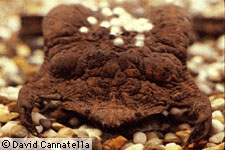
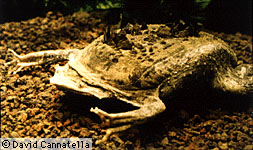
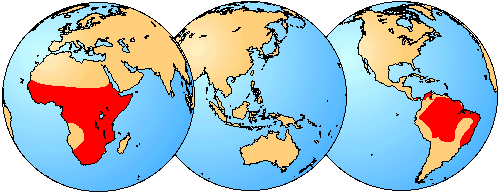
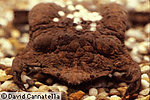


 Go to quick links
Go to quick search
Go to navigation for this section of the ToL site
Go to detailed links for the ToL site
Go to quick links
Go to quick search
Go to navigation for this section of the ToL site
Go to detailed links for the ToL site